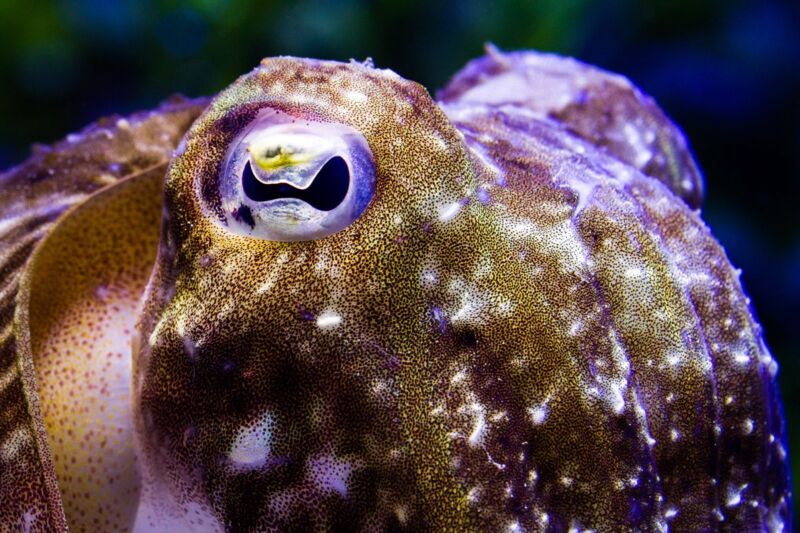

Cuttlefish camouflage gets complicated
source link: https://arstechnica.com/science/2023/06/cuttlefish-camouflage-gets-complicated/
Go to the source link to view the article. You can view the picture content, updated content and better typesetting reading experience. If the link is broken, please click the button below to view the snapshot at that time.

more than meets the eye —
Cuttlefish camouflage gets complicated
They receive constant feedback about their skin pattern and adjust camouflage accordingly.
Jennifer Ouellette - 6/28/2023, 3:00 PM

It's well known that cuttlefish and several other cephalopods can rapidly shift the colors in their skin thanks to that skin's unique structure. But according to a new paper published in the journal Nature, the process by which cuttlefish generate those camouflage patterns is significantly more complex than scientists previously thought.
“Prior research suggested that cuttlefish only had a limited selection of pattern components that they would use to achieve the best match against the environment," said co-author Sam Reiter of the Okinawa Institute of Science and Technology (OIST). "But our latest research has shown that their camouflaging response is much more complicated and flexible—we just hadn’t been able to detect it, as previous approaches were not as detailed or quantitative.” Their quantitative approach combined high-resolution video with machine learning to investigate not just camouflage patterns but the related process of "blanching" in response to threats.
Cuttlefish and their fellow cephalopods are fascinating creatures. For instance, a 2021 study showed that cuttlefish can delay gratification. Specifically, they could pass a cephalopod version of the famous Stanford marshmallow test: waiting a bit for their preferred prey rather than settling right away for a less desirable prey. Cuttlefish also performed better in a subsequent learning test—the first time such a link between self-control and intelligence has been found in a non-mammalian species. Cuttlefish also seem to exhibit a form of episodic memory, but unlike humans, their capability doesn't decrease as they age.
AdvertisementAs for the camouflage ability, we previously reported that squid skin is translucent and features an outer layer of pigment cells called chromatophores that control light absorption. Each chromatophore is attached to muscle fibers that line the skin's surface, and those fibers, in turn, are connected to a nerve fiber. It's a simple matter to stimulate those nerves with electrical pulses, causing the muscles to contract. And because the muscles are pulling in different directions, the cell expands, along with the pigmented areas, changing the color. When the cell shrinks, so do the pigmented areas.
Underneath the chromatophores, there is a separate layer of iridophores. Unlike the chromatophores, the iridophores aren't pigment-based but are an example of structural color, similar to the crystals in the wings of a butterfly, except a squid's iridophores are dynamic rather than static. They can be tuned to reflect different wavelengths of light. A 2012 paper suggested that this dynamically tunable structural color of the iridophores is linked to a neurotransmitter called acetylcholine. The two layers work together to generate the unique optical properties of squid skin.
And then there are leucophores, which are similar to the iridophores, except they scatter the full spectrum of light, so they appear white. They contain reflectin proteins that typically clump together into nanoparticles so that light scatters instead of being absorbed or directly transmitted. Leucophores are mostly found in cuttlefish and octopuses, but there are some female squid of the genus Sepioteuthis that have leucophores that they can 'tune" to only scatter certain wavelengths of light. If the cells allow light through with little scattering, they’ll seem more transparent, while the cells become opaque and more apparent by scattering a lot more light.
Page:
Recommend
About Joyk
Aggregate valuable and interesting links.
Joyk means Joy of geeK